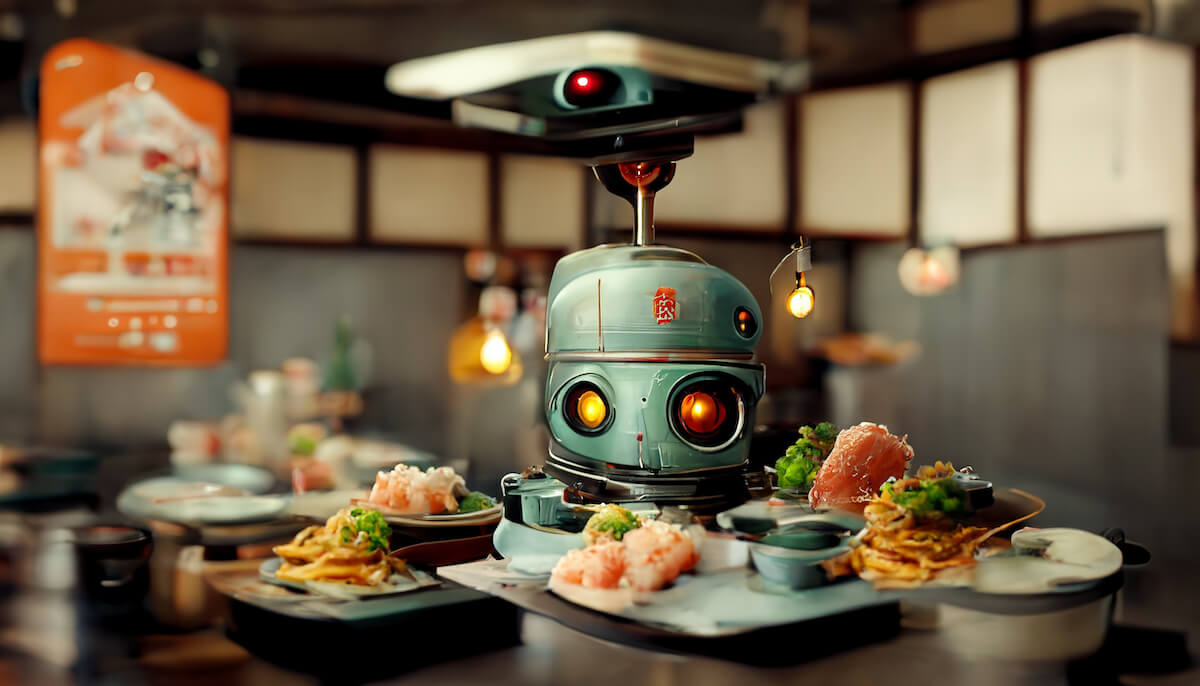- Why short-staffing hurts QSR profitability and how technology helps by giving restaurants the ability to achieve full capacity operations
- How the latest restaurant technologies not only increase revenue and profits but also improve guest service standards
- How modern back-of-house (BOH) and front-of-house (FOH) tech applications are essential for QSR operators to boost franchise growth
Restaurant owners operating by the usual quick-service restaurant (QSR) franchise model often are interested in exploring and applying new strategies aimed at increasing their same-store sales and maximizing their franchise growth potential. Incorporating modern and cutting-edge restaurant technology platforms is essential for operating at peak efficiency in single-store franchises, as well as paving the way towards future expansion.
Opening new franchises is an excellent way to build a brand and dramatically increase profits, but only if the restaurant owner has the resources to effectively support these new locations. Once QSR operators have those assets on hand, they can achieve franchise growth by expanding to a multi-store ownership.
Technology can be that critical resource for owners to maximize their single location and also grow to the point of operating multiple locations, being successful across their stores. Tech platforms help franchise owners scale and maintain consistency and productivity as their franchise grows to serve more and more guests. Simply put, technology solutions are the most impactful tool for franchise owners to increase growth in their existing stores and lay the foundations for additional locations.
Striving toward operating at full capacity

It isn’t news that QSR franchise owners across the United States continue to grapple with unprecedented labor shortages, making it hard to run their restaurant locations at their full potential when there aren’t enough employees on hand. Although January 2022 saw the creation of 108,000 new food and beverage jobs, this figure fell short of what franchisors hoped for. Despite a substantial wage increase across the food franchise sector — the average restaurant worker’s hourly pay rate now exceeds $15 — QSR employment numbers have yet to return to pre-pandemic levels. The food service sector also typically records higher-than-average employee turnover rates, adding to the challenge of having an adequate amount of staff.
Because it affects restaurants’ ability to meet demand and serve guests well, short-staffing reduces profitability and adds financial pressure to franchise establishments still reeling from pandemic lockdowns and the resulting loss of business. Plus, if restaurant franchisors don’t have enough team members on staff, then the burden falls on existing employees to fill the gaps. This creates a chain effect of team member stress and a chaotic work environment. Guests also suffer under these conditions, frustrated by long wait times and rushed, inaccurate orders. In addition, franchise owners aren’t reaching the full financial potential of their restaurants.
In contrast, a restaurant that is fully-staffed, or where employees aren’t overwhelmed, provides guests with a quality dining experience. Technology solutions that automate routine tasks, such as order taking, help to alleviate staff from becoming overburdened, and are key to keeping staffing issues to a manageable level. Technology makes day-to-day operations run more smoothly, helping franchises to hold onto veteran staff members and maintain a stable hiring pipeline, strengthening workplace morale and improving employee retention.
While the pandemic and events of the past year or two continue to challenge restaurant owners today, recent and ongoing restaurant technology breakthroughs actually make it doable for established and startup franchisors alike.
Essential restaurant technologies for 2022

The latest restaurant technologies like artificial intelligence (AI), automation and restaurant reporting systems are exciting new options that multi-unit food service business owners can leverage to better serve their guests, satisfying them with the efficiency and personalized attention they deserve.
Automation
Following decades of research and development, automation tools are no longer limited to high-tech industries — today, automation is embraced across the restaurant world.QSR chains like Domino’s are experimenting with innovative technology like self-driving pizza delivery cars. Guests place prepaid orders through Domino’s mobile app or website, then receive text message updates to track the driverless vehicle’s location and use a PIN to pick up their order when it arrives.
Robotics technology also assists in preparing food as well as delivering it. Picnic Pizza Systems’ automated pizza ovens can cook hundreds of pizzas per hour with only one staff member needed for oversight. Sally by Chowbotics is a self-directed salad maker capable of prepping salads from up to eight fresh ingredients in only 90 seconds — perfect for QSR operators interested in adding healthier choices to their menus without overburdening their staff with responsibilities.
Artificial intelligence (AI)
Restaurant AI solutions are one of the most valuable tools QSR operators have at their fingertips. Restaurants can be hectic during rush times, with team members panicking and rushing orders when there is an influx of guests. This can lead to incorrect orders and dissatisfied guests.
Virtual ordering assistants powered by conversational AI never panic or rush guests, and always provide optimal service, giving each guest the one-on-one attention they deserve. In addition, voice AI gets smarter with each order, with the virtual assistants learning to recommend relevant order suggestions and upsells based on trends and past orders. Virtual ordering assistants record multiple guest orders simultaneously across different ordering channels such as phone and drive-thru, meaning that guests never have to be put on hold or wait to place their orders. This dramatically increases productivity and franchise growth potential.
Restaurant voice AI enables restaurants not only to maintain but even increase the speed of service for guests by freeing up team members to focus on fulfillment and higher-level guest service instead of order-taking duties. Relieving the burden on overworked staff also benefits the workplace and improves job satisfaction: Employees know their AI coworkers will never let them down.
Restaurant reporting systems
Point of sale (POS) reporting systems collect data on every transaction, further helping restaurant franchise owners by empowering them with information. This provides franchisors with valuable information on guest ordering trends, popular or unpopular menu items, and essential data for multi-unit operators (e.g., comparing sales figures between franchises or accounting discrepancies).
These reporting tools don’t require a dedicated data specialist to compile and analyze the reports. Instead, POS reporting integrations automatically store information about transactions, inventory usage, team member timesheets and more. These POS systems also allow franchise managers to synchronize with first- and third-party online ordering systems, allowing for automatic payment processing and order tracking.
Upgrade both FOH and BOH technology to accelerate franchise growth

Daily restaurant operations rely on seamless coordination between the front-of-house (FOH) and back-of-house (BOH) for peak performance. A great meal won’t necessarily compensate for slow and inconsistent team members or a rushed guest experience, just as friendly and personalized guest service may not make up for late or disappointing food.
That’s why it’s essential that QSR franchise operators update FOH and BOH technology in tandem — they’re equally critical to restaurant performance.
Front-of-house (FOH) technology upgrades
Once McDonald’s popularized self-service kiosks, other QSR operators followed their example and adopted new FOH tech solutions like tabletop ordering systems. Best of all, diners love the convenience this technology provides: 53% of respondents in the 2019 Restaurant Success Report rated self-ordering kiosks as an important contributor to their level of satisfaction. A Cornell University School of Hotel Administration study on tabletop ordering technology reveals that around 79% of surveyed diners reported that using the device improved their dining experience due to convenience, ease of use and payment security. Roughly 80% stated they would return to the restaurant specifically because of the availability of tabletop ordering.
Back-of-house (BOH) technology upgrades
Restaurant kitchens are fast-paced and often chaotic. As a result, BOH staff might not notice if the kitchen printer slips out a new order. Many QSRs have abandoned printed tickets altogether and have switched over to kitchen display systems (KDS). KDS offers a number of advantages over traditional ticket printers. Wall-mounted KDS screens allow the kitchen staff to view all orders in one place, which makes it much easier for the cooks to fulfill orders accurately and on time. KDS syncs with the franchise’s POS systems, allowing it to pick up new orders in real-time.
Use voice AI to achieve unparalleled franchise growth

To benefit their franchises, forward-thinking small business owners should embrace the latest restaurant technologies available. This will ensure they achieve their stores’ full potential, including expanding their franchise to multiple locations, and ultimately help them outperform competitors who cling to outdated methods. Modern consumers expect local businesses to adapt to modern times — and embracing technology is a key part of this.
As franchise owners continue to deal with hiring and retention challenges and explosive guest demand, cutting-edge restaurant technology like voice AI empowers QSR operators to overcome labor challenges as well as boost revenues and improve order accuracy and fulfillment speed.
ConverseNow’s industry-leading voice AI virtual ordering platform has made a game-changing impact for franchisees from the country’s top restaurant brands, operating in more than 1,200 stores across 40 states. Modernize your restaurant with voice AI technology to increase franchise sales and jumpstart franchise growth. Schedule a demo today with ConverseNow.